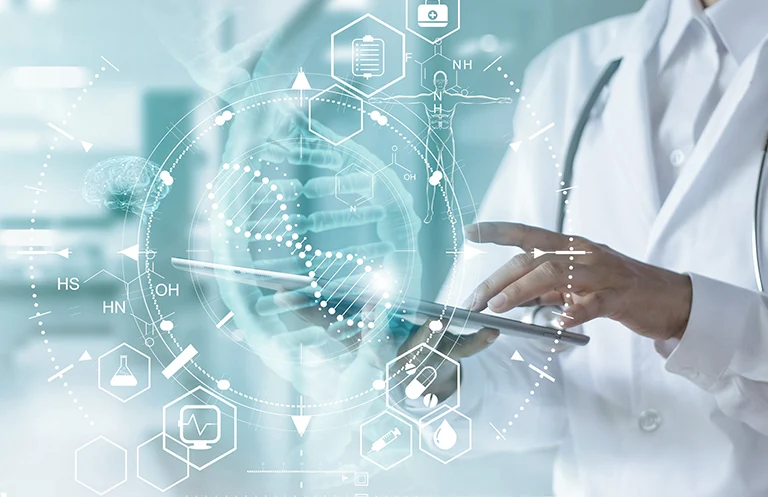
Arrow Automotive Center of Excellence – Brochure
Executive Summary Arrow Automotive, a division of Arrow Electronics, is

Executive Summary Arrow Automotive, a division of Arrow Electronics, is

Executive Summary eInfochips, part of Arrow Electronics, offers a comprehensive

Healthcare is being revolutionized by wearable medical technology, which makes

Automation and AI in medication management revolutionize patient care by improving adherence, minimizing prescription errors, and enhancing outcomes. Automated Medication Management Systems (AMMS) ensure accurate drug scheduling, real-time monitoring, and integration with wearables and electronic health records. This blog explores how automation and AI are transforming medication management through enhanced adherence, real-time monitoring, data integration, and advanced technologies like wearables and robotics.

New computer technology called generative AI is making big changes in healthcare. It’s helping doctors work better and making things easier for patients. This smart technology can help find diseases faster, make new medicines, and even control robots for surgery. It looks at lots of information to give each patient the best care possible.

Executive Summary The healthcare industry is undergoing a revolution fueled

Azure Health Data Services: Securely connects, stores, and analyzes health data (FHIR and DICOM ), and helps to create secure, scalable, and cost-effective healthcare solutions.

The healthcare sector is transforming with the use of IoT, AI/ML, smart wearables, robotics, and virtual and augmented reality. These technologies improve patient lives by reducing chaos, enabling early disease detection, remote monitoring, improved medication administration, and telemedicine.

The Internet of Medical Things (IoMT) is a growing trend in healthcare, enabling medical devices to gather, transmit and receive data. These devices including patient remote monitoring, and smart wearables are gaining popularity due to chronic disease and the aging population. IoMT devices help in the continuous flow of patient data, which helps the healthcare provider to have real-time access to health information.

Digital transformation in healthcare uses technology to improve patient care, reduce costs, and enhance patient experiences. It improves efficiency, communication, and real-time monitoring of health metrics, leading to faster appointment scheduling, reduced wait times, and a more effective healthcare system.

eInfochips, an Arrow Electronics company, is a leading provider of digital transformation and product engineering services. eInfochips accelerates time to market for its customers with its expertise in IoT, AI/ML, security, sensors, silicon, wireless, cloud, and power. eInfochips has been recognized as a leader in Engineering R&D services by many top analysts and industry bodies, including Gartner, Zinnov, ISG, IDC, NASSCOM and others.
Headquarters
– USA, San Jose
– INDIA, Ahmedabad
Write to Us: marketing@eInfochips.com
©2025 eInfochips (an Arrow company), all rights reserved. | Know more about Arrow’s Privacy Policy and Cookie Policy
Schedule a 30-minute consultation with our Automotive Solution Experts
Schedule a 30-minute consultation with our Battery Management Solutions Expert
Schedule a 30-minute consultation with our Industrial & Energy Solutions Experts
Schedule a 30-minute consultation with our experts


